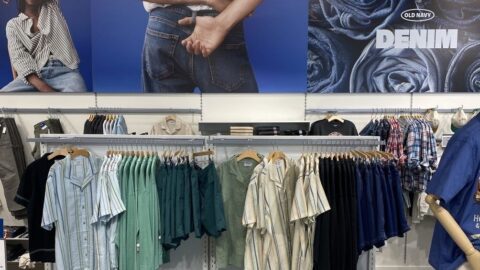“Go global, act local.” It’s a phrase commonly used among executive leadership teams wanting to strike the perfect balance between personalized experiences and incremental growth.
In the digital-driven era of retail, achieving scale through global expansion is easier than ever. Marketplaces, social media and branded ecommerce experiences offer a multitude of opportunities for brands to build customized plans for global growth, but often that “local” piece gets lost in translation (pun intended).
During a panel at the Retail Innovation Conference & Expo, experts across the industry came together to discuss:
- The latest global ecommerce trends;
- The challenges of expanding into new markets; and
- How brands and retailers can harness the power of digital to expand successfully.
Tap into Distinct Behaviors Across the Globe
“There’s a beauty and complexity in having brands online,” noted Katie Thomas, who is a Lead at the Kearney Consumer Institute. “We already have so many options to choose from, but there’s a unique opportunity for consumers to find new and interesting products.”
Thomas, who studies global commerce trends, noted that while some consumers actively seek out global brands, others are simply looking to meet a specific need. They may want a certain aesthetic or quality level for a product, and the fact that a global or emerging brand is providing it is merely a bonus.
“You want to embrace these two things and ensure it’s not just about the fact that it’s global,” Thomas said. “You want to also offer consumers something that hasn’t been fulfilled by their current options.” She encouraged attendees to look at the luxury market, which is ripe with examples of Europe-based brands that were able to obtain broader appeal because they had desirable products and unique digital experiences.
As brands establish their unique value drivers, they also should consider the intricacies and unique expectations of different markets, explained Thomas. “When you think of the core themes and nuances, you tend to start with the same concepts,” she noted. “They just manifest differently in different markets.”
Service expectations and price-to-value ratios are considered key. But as brands dig deeper, they’ll learn that in Europe, consumers don’t want packages left outside and in Asia, they have more robust mobile wallets. These distinctions connect to consumer expectations and should impact brands’ strategies as they move into different markets, according to Thomas.
Build Trust Through Transparent CX
Consumers may have a desire to find new brands and unique products from around the globe, but one question may prevent them from clicking “add to cart”: Will this product have the same quality that’s advertised?
Sonya Gill, Founder and CEO of marketplace THE LNK, noted that this was the big “trust gap” impacting emerging brands that want to scale globally. “Consumers are more than willing to shop globally; they just want to ensure that what they saw online is going to show up at their door,” she said. “We’re trying to close that gap and validate brands and products before [we feature them on our site].”
Transparency through content and advanced customer service tools can build consumer trust. Brands and retailers just need to implement technologies that support this kind of more personal, one-to-one service that makes customers feel seen and supported. Gill, whose marketplace is currently focused on the India market, noted that consumers in that area of the globe are used to a very personal, high-quality service experience. “In building all these apps and APIs, we’ve kind of lost that customer touch.”
Harness the Unique Value of Marketplaces
Marketplaces are a big part of the international expansion discussion, and rightfully so: brands that sell on various marketplaces can scale globally without dealing with the complexities of each market. Meanwhile, retailers that decide to open their own branded marketplaces can curate products from different countries (supporting a ‘glocal’ mission) to ensure they meet the needs of different consumer groups worldwide.
Although two-thirds of consumers say shopping on marketplaces is more convenient than on traditional ecommerce sites, Fareeha Ali, Director of Market Intelligence at Mirakl, noted that there are some experience gaps that retailers need to close if they want their marketplaces to scale successfully.
“As brands and retailers sell more online, it has enabled consumers to become pickier,” Ali explained. “This puts more pressure on retailers to deliver that quality customer service to meet their demands. It’s not just about having all the products but making sure your [marketplace] sellers are maintaining brand equity, as well.”
For example, Mondelez International focuses on ensuring a great product experience for consumers, whether they’re selling through Amazon, Tmall or Walmart. “It’s all about how consumers discover our brands,” said Abhishek Ahluwalia, Global Ecommerce Director of Commercial Strategy and Growth for Mondelez International. “Are we showing up in the right way, is our content great and are we partnering on the right activation?”
Mondelez also uses marketplace partners to support product ideation. Ahluwalia explained that marketplaces have rich transactional data about category demand, flavor profiles and even dietary requirements. This data provides more context into consumer behaviors via search volumes, which helps Mondelez validate product development before launching in different markets.
Engage Local Communities in Distinct Ways
As brands strive to engage and acquire consumers and drive them to their products, the panelists emphasized the importance of engaging local creators and communities. The approach companies take will vary based on the preferred platforms of different groups.
For example, social commerce is a “big thing” in China, Ahluwalia noted. “Being on WeChat, TikTok or Pinduoduo is a must for any brand in that country. Make sure you activate your brand wherever the consumer is and that you use the right influencers, content creators and opinion leaders who can credibly pass on the message to their followers.”
Livestreaming also has taken the APAC market by storm, starting in China and slowly trickling into Indonesia, Vietnam and the Philippines, Ahluwalia explained. Although social platforms have been testing new livestream solutions in the U.S., adoption has been slow, which is creating a debate of whether the trend will have an impact in this market. Ahluwalia encouraged the audience to “participate, test, learn and iterate.” He added: “There has been no playbook because the playbook would be redundant in six months.”
Consider the Entire Experience — Returns Included
The pandemic-driven surge in ecommerce had significant ripple effects on retail businesses. While brands undoubtedly saw a rise in sales, they also saw a rise in returns. This has inspired companies to think about the entire customer experience, including the last mile and returns experience.
Gill noted that making reverse logistics seamless for the customer is key. “People don’t want to deal with the headache [of returns], so they just keep it and it’s collecting dust in their closet. It has a real impact on the customer’s perception of your brand.”
Reverse logistics companies like Returnbear are alleviating the headache for consumers and brands alike, explained Gill. The company has several locations where consumers can drop off unwanted goods. Returnbear employees then handle the entire process — from printing the label to processing and tracking the return. “You have to look at all those components of a customer service experience through a global lens,” she explained.















